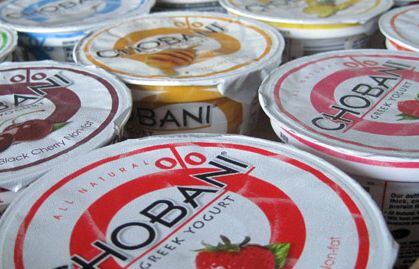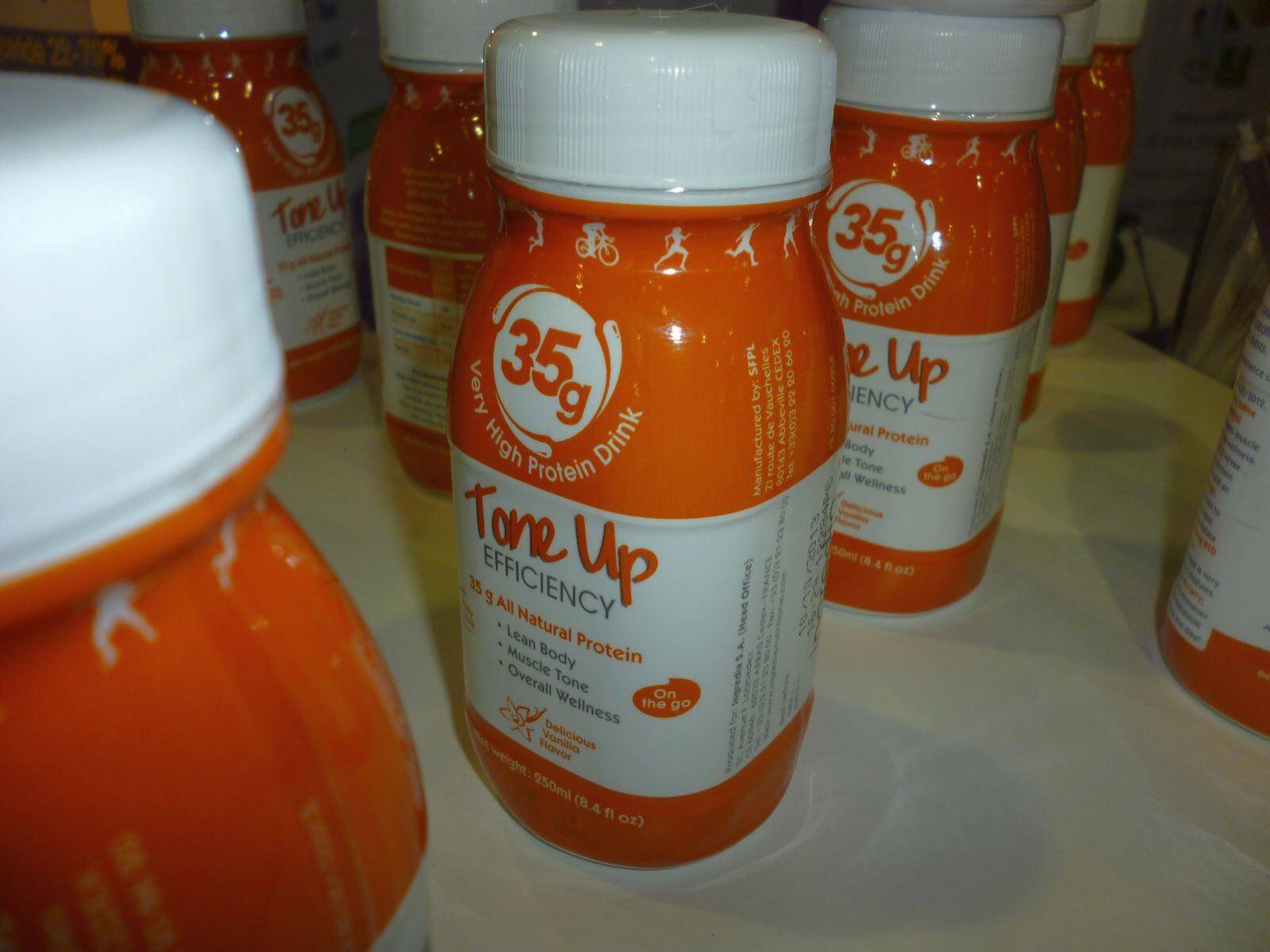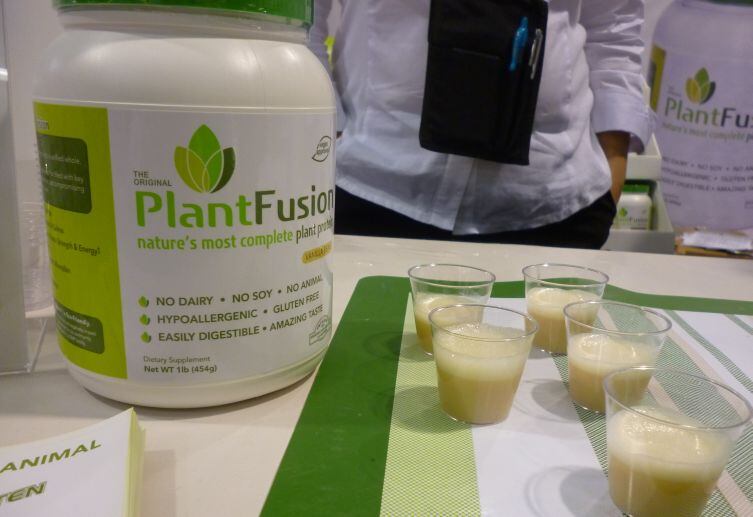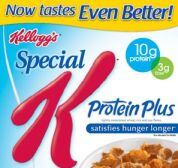Which leaves firms arguing that protein can help 50 and 60-somethings maintain lean muscle mass and stay mobile and strong as they age in a bit of a quandary.
Sarcopenia is not sexy, while talking about muscle wastage makes boomers think of their parents, not their nearest and dearest, points out Datamonitor’s innovation insights director Tom Vierhile.
Meanwhile, although we know that older women often don’t get as much protein as they should - or at least not when they should (click here for more details) - research also shows that many consumers still believe protein intakes are something male athletes and bodybuilders should think about, not middle-aged women.

However, the meteoric rise of Greek yogurt, attempts by mainstream brands to take sports nutrition to the mass market, and the general shift in messaging around weight management from dieting, calorie-counting and fat and sugar reduction to healthy eating, fitness, hunger management and maintaining a healthier body shape, create new opportunities to rebadge protein - without having to resurrect Atkins, say marketers.
Sports brands are going for a more mainstream positioning
Euromonitor International analyst Diana Cowland tells FoodNavigator-USA that the lines between weight management, sports nutrition, and general health & wellness, are blurring, with some brands such as Power Bar “becoming a more mainstream product targeting consumers interested in weight management and healthier snacking instead of just for sports nutrition”.
She adds: “Mass market appeal in food and drink products and those for healthy ageing is gaining ground and shelf space in supermarkets as global brands enter this arena.
“In the US for example, Dannon’s Activia launched a new product ‘Breakfast Blend’ in August 2012 which is a slightly larger pot with twice the amount of protein (11g) compared with other Activia varieties.”
Protein offers longer-term approach to weight control

Protein can in particular appeal to consumers of both sexes “looking for a way to maintain or lose weight by a more natural and long-term means rather than a quick fix”, she says.
“Protein is considered to be more natural due to the fact many protein types are derived from natural sources with little modification during manufacturing.
“Protein also appeals to consumers as it is an easier and more convenient approach to watching food intake rather than counting calories and in line with the preferred more ’passive’ approach to weight management.
“Foods high in protein are also considered to be more appealing than many ‘light’ or reduced fat or reduced sugar variants. Light and reduced fat variants are increasingly gaining a poor reputation due to the perceived artificial nature of ingredients added to these products to ensure they have an appealing taste.
“In addition, those with low fat content have been found in some instances have a high sugar content.”
A neat segue from weight management to healthy aging?
Meanwhile, women who associate protein with weight management and maintaining a healthy lean body shape in their 20s, 30s and 40s, are more likely to feel positive about protein as something that can help them stay active and maintain their leave muscle mass as they hit their 50s and 60s, she says.
“If women, who are in particular, more concerned about their weight, take the approach to eat a diet high in protein, then the same women are also likely to be concerned about retaining body shape as they age.”

And while convenient formats like bars and ready-to-drink beverages provide a bridge to mainstream consumers, sports supplement manufacturers are trying to broaden the appeal of protein powders via smaller, re-sealable packages, cocktails of plant-based proteins as well as the body builders’ favorite whey, more pastel shades, clean label positioning and more female-friendly packaging.
Meanwhile, retailers are also encouraging consumers to regard such protein supplements - once the preserve of body builders and hardcore athletes - as more mainstream, says Cowland: “Retailers such as Whole Foods now place shelves of protein powder supplement bottles in the produce department so the supplements can gain more visibility, especially among vegetarians and vegans.”
Euromonitor consumer health company specialist Chris Schmidt notes that claims about satiety and lean muscle are “increasingly resonating with both fitness-oriented Millennials and the US' significant aging population, and as a result, protein powder was one of the fastest-growing categories in vitamins and dietary supplements in the US from 2006-2011 in percentage terms.
“In 2012, the category is expected to grow another 21% to top $320m.”
Mintel: Sharp growth in products making high protein and vegan claims

So what products are making protein claims?
According to Mintel, the US accounted for 19% of global food and beverage launches with a ‘high protein’ positioning in 2012 followed by India at 9% and the UK at 7%.
Snacks dominate the category - accounting for 20% of the high protein food and drink new product launches in the US in 2012, followed by meal replacement and other fortified drinks (17%) and spoonable yogurt (15%), says Mintel.
It also points to strong growth in products launched in the US with both a high protein and vegan claim (up 54% since 2008).
The number of sports beverages and meal replacements making high protein claims also grew solidly over the same period (+37%), with 46% of US meal-replacement users stating that high-protein is a very important selection attribute for them, says Nirvana Chapman, global food science trend analyst.
“In the weight management industry, there is an upward trend towards products that combine whey protein, peptides, and calcium for weight loss.”
Given rising awareness of the relationship between protein and satiety, meals and soups integrating high protein content are also ripe for growth, predicts Chapman.
Click here to get Datamonitor's take on protein growth opportunities.
